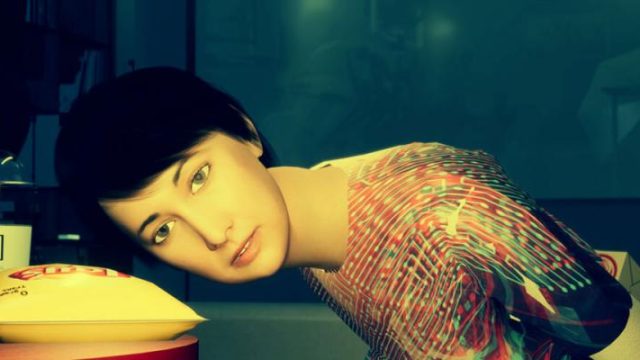We talk a lot around here about the theatrical experience and how it affects movie watching versus home viewing. Theatrical watching adds a presumption of focus on the film – the only bright thing in a dark space presuming you’re not pulling out your phone – and has the possibility of crowd reaction and (hopefully) the promise of professionally calibrated picture and sound. Many experimental short films are made for a gallery context, which can drastically change the experience of the piece where in addition to the regular theatrical enhancements, the video presentation itself can change:
Dessert-Disaster (excerpt) (2017) dir. Alison Nguyen
Dessert-Disaster (installation documentation)
Alison Nguyen is a New York-based video artist who incorporates themes of commercialism, technology and race in her experimental films. These are often featured as installation exhibits, though excerpts are available to stream from her website.
“Dessert-Disaster,” a wonderfully playful piece where Nguyen puts close-up footage from snack commercials side-by-side with news footage of disasters with similar oozing and explosive imagery. The soundtrack comes from breathless witnesses to the disasters. There’s commentary here in matching the pornographies of sugar sales and rubbernecking, and considering the base responses activated by each side. But mostly it’s fun to see the frivolous matched with the serious and how much they tend to melt together on screen. In the fullscreen excerpt, the images are still side-by-side (rather than intercut), facing forward in separate panels like images intended for a stereoscopic viewer. The video of the full installation shows the videos side-by-side as well, but on perpendicular walls and with no barrier between the two sides. With the cozy proximity of the sides and the projections bouncing off the reflective surfaces of the walls and floor – not to mention the size of the projections compared to a personal screen – there’s a lot more literal merging of the images in the installation. This doesn’t add a lot to the intellectual exercise of the video, but one can image the sensation of walking into the room with the installation is very different than pulling up the video on your phone.
you can’t plan a perfect day sometimes it just happens. (2017) dir. Alison Nguyen
Once again Nguyen pulls clips from advertising, this time collecting shots using lens flares, that in their original context signal the viewer that they’re ostensibly witnessing something awe-inspiring or at least eye-catching. Here the blasts of light become meaningless holes in space when paraded with Warholian repetition. While the dessert footage still retained some of its power – maybe too much power since it can go toe-to-toe with an erupting volcano – here the commercial attempts to harness the Sun itself just create a kind of washed-out emptiness.
The emptiness of repetition appears again in Nguyan’s creation Andra8, a 3D virtual character who who looks and moves like a Carrie Ann Moss action figure on a morphine drip. She tells us she survives by consuming a constant stream of human data collected in her various capacities as a “virtual assistant, a data janitor, a life coach, an aspiring influencer, and content creator.” She lives in an uncanny, brightly-colored virtual apartment, described by Nguyan as “the inoffensive love child of the results of a ‘Mid-century modern’ Pinterest search, a mental health hospital, and a perpetually sunny L.A. Airbnb. In other words: A kind of antiseptic neoliberal purgatory.”
my favorite software is being here (excerpt) (2021)
Andra8 is flexible in her deployment. She stars in “my favorite software is being here,” a short film screened both as an installations and as part of live and virtual festivals, and currently available to stream on the Criterion Channel. Andra8 even co-wrote the script with Nguyan through an algorithm that fed on the posts of “‘B-list’ social media influencers.” Andra8’s words and motion are provided by Nguyan who leans into the limitations of the technology that translates these things to the virtual voice and body. Andra8 has also “substituted” for Nguyan in virtual appearances a couple times during the pandemic, where the virtual being proves only slightly more uncanny and annoying than the average Zoom meeting co-worker. She also continues to ply her virtual wares through profiles at online freelance aggregators like fiverr.
Just as feature films will no doubt adapt to the changing ways we view them, the art world finds a place for installation and performance, even when the definition of “place” can feel nebulous and alien.

